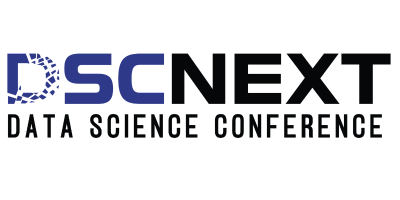
Over the past decade, business intelligence (BI) has evolved rapidly. Data has become vast, cloud technology is mainstream, and interactive dashboards have replaced static spreadsheets. The rise of self-service analytics has democratized data access, empowering businesses of all sizes to make informed decisions.
2024 was a significant year for BI, and its momentum will continue into 2025. However, the landscape is evolving. Instead of asking if they need BI, companies are now focused on choosing the best BI solutions for their specific needs. Data security, AI-driven insights, and customized analytics will dominate the BI space in 2025.
Let’s explore the top 10 trends shaping business intelligence in 2025.
1) Construction Analytics: Digitizing a Traditional Industry
The construction industry, historically slow to adopt new technologies, is now embracing digital transformation. In 2025, we expect greater adoption of:
AI-driven analytics for predictive maintenance and project efficiency.
Digital twins for real-time project monitoring.
IoT sensors for tracking materials, labour, and safety compliance.
With decentralized teams and outdated reporting, construction companies are increasingly relying on construction analytics to consolidate data from multiple sources, improving efficiency and cost management.
2) Artificial Intelligence (AI): The Backbone of Modern BI
AI is reshaping business analytics, shifting from static reports to real-time, proactive insights. Key AI trends in BI for 2025 include:
AI-Powered Business Analytics
Anomaly detection: AI learns from historical data to identify unusual patterns.
Automated insights: AI can analyze datasets, detect trends, and generate reports without human intervention.
AI assistants: BI tools now offer natural language processing (NLP), allowing users to query data using simple text or voice commands.
Ethical AI and Compliance
AI accountability is becoming crucial. Regulatory frameworks like the AI Bill of Rights aim to ensure fairness and data security. Organizations must implement AI governance models, such as Gartner’s AI TRiSM framework, to ensure reliability and ethical AI use.
3) Adaptive AI: Smarter Decision-Making
Unlike traditional AI models, Adaptive AI continuously learns from new data, adjusting strategies in real time. Benefits include:
Faster, more context-aware decision-making.
Improved fraud detection and risk assessment.
Real-time business process automation.
Companies implementing Adaptive AI are expected to outperform competitors by 50% in business adoption and user acceptance by 2026.
4) Generative AI: Automating Data Interpretation
Generative AI has revolutionized BI by automating data analysis and content creation. In 2025, businesses will use it for:
Automated report generation based on real-time data.
Scenario simulations to assess business strategies.
Fraud detection models predicting financial risks.
However, concerns over bias, misinformation, and data privacy remain. Ethical AI governance will be critical in mitigating these risks.
5) Agentic AI: Autonomous Decision-Making
A step beyond Generative AI, Agentic AI acts independently to achieve business goals. Unlike rule-based AI, it:
Makes real-time operational decisions without human intervention.
Optimizes supply chains, inventory, and logistics autonomously.
Enhances human-AI collaboration, improving efficiency.
As Agentic AI matures, businesses will see significant gains in automation and strategic execution.
6) Real-Time Data Analytics: Instant Business Insights
With the rise of IoT and cloud computing, businesses no longer rely on historical reports. Instead, they demand:
Live dashboards tracking key performance metrics.
Automated alerts for anomalies or operational issues.
Instant market trend analysis for competitive decision-making.
Companies using real-time analytics gain a significant edge in agility and responsiveness.
7) Data Security & Governance: A Non-Negotiable Priority
With increasing data breaches, BI solutions must prioritize:
Zero-trust security models to prevent unauthorized access.
Automated compliance checks to meet regulatory standards (GDPR, CCPA).
AI-powered threat detection to identify and mitigate cybersecurity risks.
Companies failing to secure data will risk financial penalties and reputational damage.
8) Embedded BI: Analytics Where You Need It
Businesses want BI capabilities integrated directly into their existing tools, reducing the need for separate dashboards. Benefits include:
BI within CRM, ERP, and workflow tools for seamless insights.
Faster decision-making with on-the-spot analytics.
Customizable dashboards that fit specific user needs.
As organizations streamline workflows, embedded analytics will be a top BI investment in 2025.
9) Data Democratization: BI for Everyone
Self-service BI tools have made analytics accessible to non-technical users. The next phase focuses on:
AI-driven insights requiring minimal technical expertise.
Conversational BI (NLP-based queries) for intuitive interactions.
Automated data storytelling, where AI explains insights in natural language.
Organizations prioritizing data literacy will empower employees to make informed, data-driven decisions.
10) Augmented Analytics: The Future of BI
AI-driven augmented analytics enhances human intelligence by:
Automating data preparation and analysis.
Providing predictive recommendations for business strategies.
Simplifying complex datasets into actionable insights.
By 2025, businesses leveraging augmented analytics will improve decision-making speed and accuracy by 40% or more.
Final Thoughts: The Future of BI in 2025
Business intelligence in 2025 is driven by AI, automation, and real-time analytics. Companies must embrace secure, adaptive, and self-service BI solutions to stay competitive. With increasing emphasis on ethical AI, data security, and embedded analytics, businesses that invest in these trends will lead the data-driven revolution.
The International Data Science Conference 2025 (DSC Next) aims to bring together professionals and researchers in data science and machine learning to explore cutting-edge advancements and innovative solutions shaping the future of technology and analytics.
References:
RIB:A guide on digital construction
Disclaimer: This article is for informational purposes only. The insights and predictions are based on current industry trends and referenced sources. Readers are encouraged to verify details and consult official reports for precise information.

